
For the past couple of weeks we have been talking about eating the kinds of foods that are going to help us have optimal health. We have so many (TOO MANY) food choices and if we really take a close look at what we eat each day, there may be a lot of choices that seriously lack nutrition.
Processed foods much of the time take out the nutrients and even if these foods are ‘fortified’ with nutrients, it is definitely not the same as eating healthier food.
The Eat the Rainbow challenge was introduced in September of 2023, and still going. This is a timeless way you can get on a healthier eating path.
If you find any of this information helpful for your diet, we invite you to join us in the challenge. Daily access will be on the easy-to-update social sites: Facebook, Instagram, LinkedIn and X. We are hoping for lots of conversation on these sites as well. All kinds of feedback is most welcome and appreciated and do not hesitate to message us personally if you need help of any kind or have a question that hasn’t been addressed.
Affiliate Disclaimer: This site contains affiliate links, which means we receive compensation, at no extra cost to you, if you make a purchase using the links provided. We appreciate your support so much!
Here is a recap of the content we posted leading up to the Eat the Rainbow Challenge that we did with SHAKLEE.
HEALTHY PROTEIN
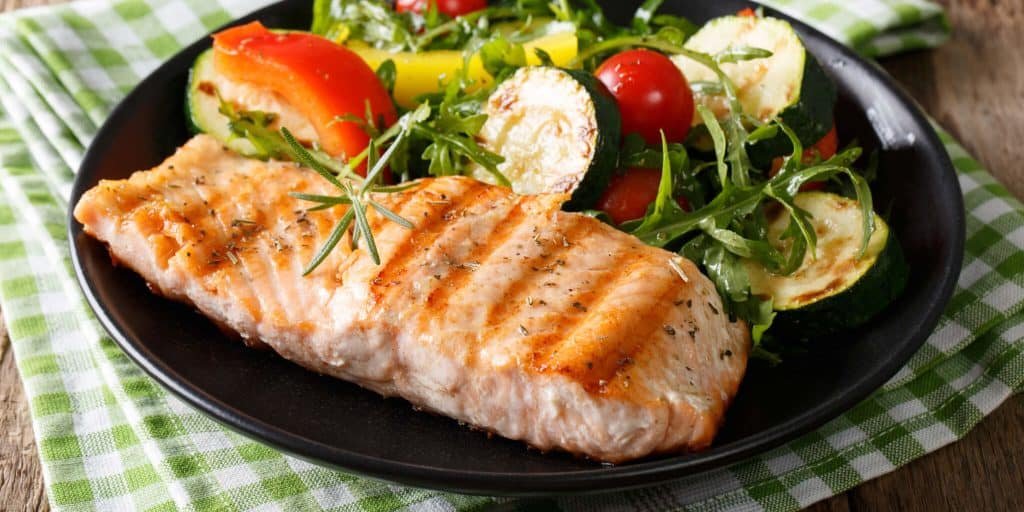
WHAT DOES 20 GRAMS OF PROTEIN LOOK LIKE?
How do you get your protein each day? Some of us get what we need easily each day, and others struggle when they add up the food they eat and realize the grams of needed protein aren’t there every day.
Did you know that if you increase your protein it can make a pretty big change in your day? It will affect your appetite because you won’t be as hungry in between meals and maybe not even be craving un healthy foods. It can improve your metabolic rate and body composition and help you lose weight if that’s one of your goals.
“Higher protein intake has been shown to increase muscle mass, reduce muscle loss during aging, strengthen bones, and improve wound healing.”*
We have seen general recommendations of daily protein intake which translates to around 55 g for a 150 pound adult. You would need to evaluate your specific daily needs based on things like how active you are, your current muscle mass, and your diet and fitness goals.
It’s important to know that the more muscle you have, the more protein you require to keep it; and the more you use your muscles, the more protein you need. Also, to put on muscle, you need more protein. So you can see that you may need more than a general recommendation.
TIP: Eat at least 20–30 g of protein during meals. Research has shown that consuming a minimum of 20 g of protein at meals may promote weight loss, muscle maintenance, and better overall health. *
*Eat Well Nutrition and Recipe Guide (We can share the full guide upon request.)
HEALTHY VEGETABLES AND FRUITS
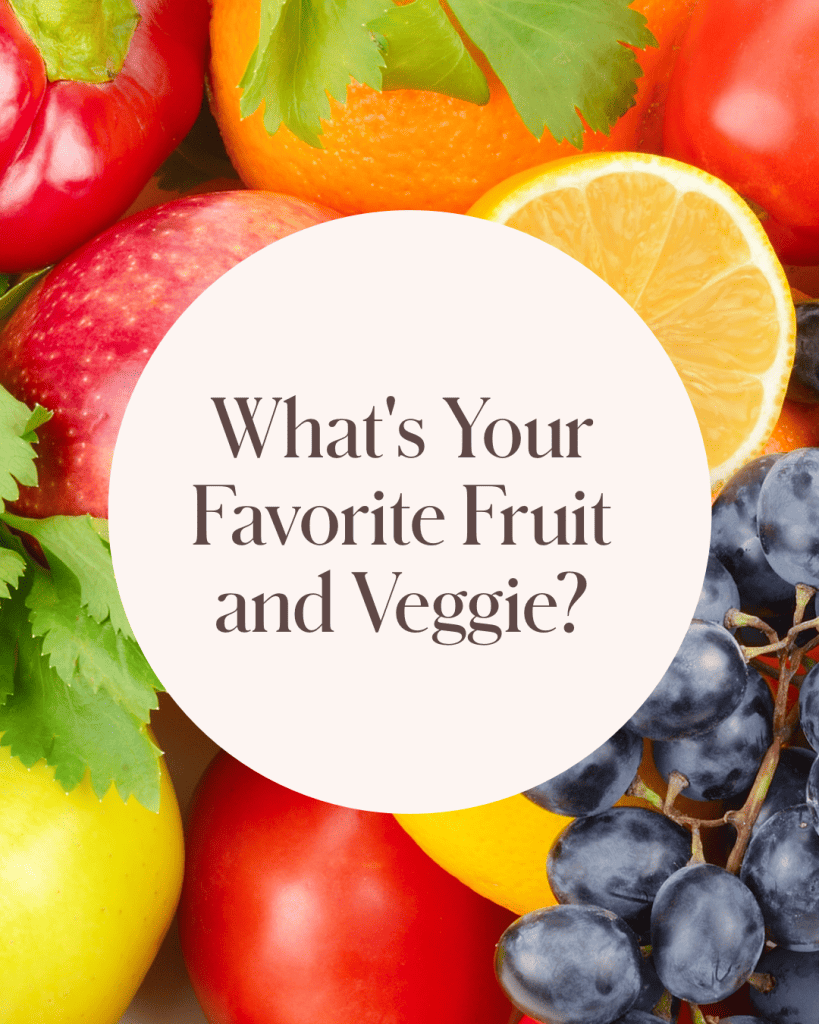
VEGGIES
When your doctor talks to you about eating better, or you access another source when researching how to eating healthy, vegetables almost always come first. Veggies are the foundation of a healthy diet which means you should get more of them, not less.
Many of us struggle with vegetables. There are people who say they like ALL the veggies, but personally I don’t fall into that category. I love summer and buying local, fresh vegetables. Somehow they taste so much better.
There are certainly more vegetables than ever to try. I keep discovering new names and have to wonder where are these new types coming from (that is for another post), but there plenty of raw and cooked vegetables available to eat every day.
My favorites in the summer are different lettuces for salads, local cucumbers, peppers and tomatoes, and zhucchini prepared different ways. Oh and of course sweet corn! All year favorites include peas, broccoli, onions, mushrooms, cooked spinach and carrots. I guess I am more of a basics veggie person and probably need to try more varieties.
Did you know veggies have protein too?
These high-protein veggies can be paired with your favorite protein to make a nutrient-packed AND protein-packed meal.
- Green Peas: 1 cup = 8 g protein
Artichokes: 1 cup = 4.8 g protein
Corn: 1 cup = 4.7 g protein
Asparagus: 1 cup = 4.3 g protein
Spinach: 1 cup = 4 g protein
Mushrooms: 1 cup = 4 g protein
Brussel Sprouts: 1 cup = 4 g protein
Kale: 1 cup = 3.5 g protein
What is your favorite vegetable?
FRUITS
Simple carbohydrates are found naturally in fruits and these aren’t necessarily the ones we need to make an effort to stay away – such as in refined and/or processed foods with white sugar and white flour.
There are so many good benefits to lots of delicious fruits. How about the fiber in these fruits.
- Apple w/skin 1 medium = 3.7 grams
- Banana 1 medium = 2.7 grams
- Blueberries (raw) 1 cup = 4 grams
- Raspberris 1 cup = 8.4 grams
- Strawberries 1 cup = 3.4 grams
- Pears 1/2 cup – 6.7 grams
- Avacado 1/2 cup – 6.7 grams
Fruits are a great source of important nutrients for all ages. You do have to watch even natural sugar content of various fruits but there are quite a few with a good bit of fiber in them as shown above. When we talk about eating the rainbow, fruit is a good example because there is a colorful variety of healthy fruits that you can eat every day.
Dried fruits may be higher in sugar and lower in fiber. Healthy fruits have different kinds of phytonutrients that our bodies really like to feed our cells and help us be healthier.
What is your favorite fruit?
HEALTHY FATS
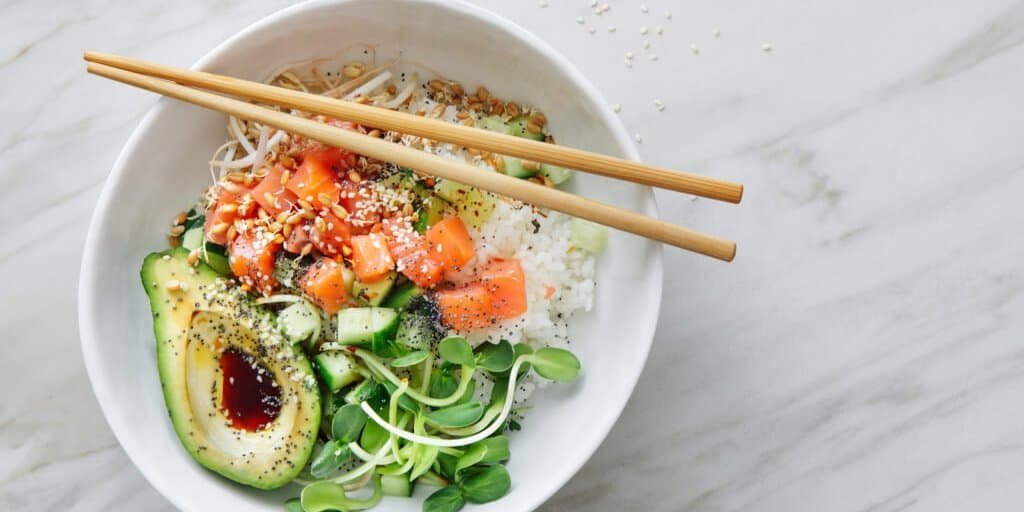
You need fat in your diet every day because it’s a healthy, essential nutrient. It’s a major source of your energy. It helps your cells function well, and it helps you absorb nutrients from your food. It also helps you produce important hormones.
But not all fat is created equal. There are good fats – unsaturated fats – and you want to get more of those. There are bad fats – saturated fats – that you want to limit in the food you eat.
You can find unsaturated fats in foods like: salmon and other fish, avacado, nuts, olive and avocado oil.
Olive Oil: Olive oil has two main compounds, hydroxytyrosol and oleuropein, which are powerful antioxidants. These antioxidants can inhibit some genes and proteins that drive inflammation. Epidemiological studies have shown a lower incidence of atherosclerosis and cardiovascular diseases.*
Avocado Oil: The main fatty acid in avocado oil is called oleic acid. Oleic acid helps fight inflammation. Avocado oil was shown in one study to neutralize free radicals, which prevents them from damaging cell mitochondria.*
Healthy Fat tips:
You can exchange vegetable oil that’s not as healthy for olive oil or avocado oil. If you use avacado oil in baking you won’t notice much of a difference because it does not have a strong taste. You can swap it out the same as you would use vegetable oil. Try baking, grilling, frying, roasting and saute with healthy oils. Good, beneficial fats come mainly from vegetables, fish, and nuts and seeds.
*Source: Eat Well Nutrition and Recipe Guide
HEALTHY CARBOHYDRATES
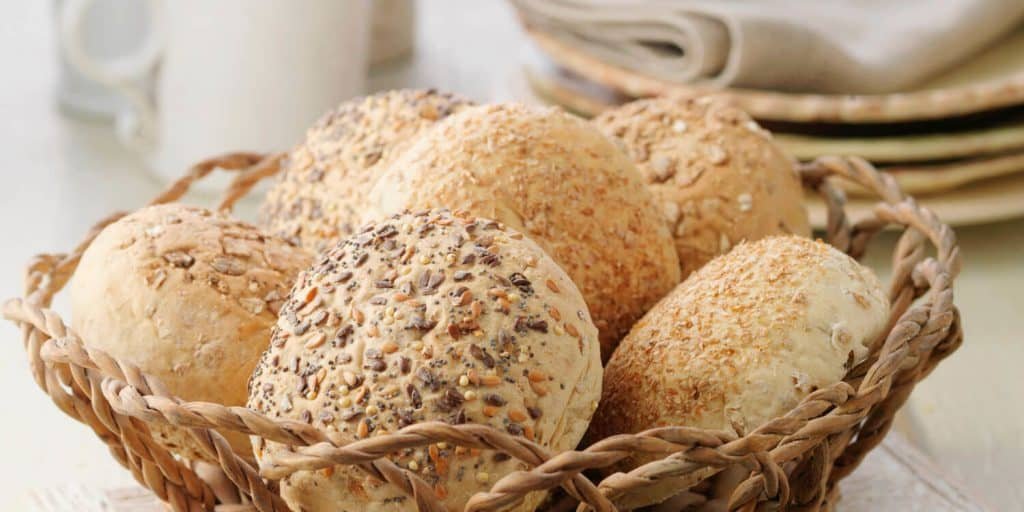
Similar to good fats and bad fats (and just about all food groups), carbohydrates are essential to your good health and there are good carbs and bad carbs.
Whole grains are better than refined carbs like white flour, white rice, white pasta, and just about all baked goods made with white flour and white sugar.
The hidden refined carbs are your drinks like soda – calories can really add up in those easy to consume large quantity hidden forms.
In terms of your health, whole grains can reduce health risks because they cause less inflammation in your body and can help your digestion and provide overall better gut health.
TIP: Read the labels of your food and look for ‘whole grain’ to be listed first. Also try to avoid ‘added sugar’ and ‘enriched wheat or flour’. We can’t be perfect all the time but we can make steps toward better choices.
When it comes to carbs, servings matter. It can be so easy to over-eat carbs. For example, most cereals list 1/2 cup being a serving and yet it may take 2 cups to fill your bowl. So now you are at 4 servings with one meal.
We have talked about processed foods on the blog and the truth is most of those refined carbs listed above are more processed. This means that a lot of the nutrition has been removed. When we try to eat for health, we need those nutrients feeding our cells and fueling our bodies.
Ways to add more whole grains into your diet: Quinoa (gluten free), brown rice (gluten free), oats, spelt, amaranth, millet (gluten free), teff (gluten free).
Swaps to consider: healthy pasta for white pasta; quinoa or brown rice for white rice; whole wheat, almond flour or coconut flour for white flour; 100% whole wheat or sourdough made with whole grain for white bread; roasted sweet potatoes for potato chips; and old fashioned or steel cut oatmeal for granola or cereal.
*If you like one of these vegetables and are interested in a new recipe, let us know and we can share.
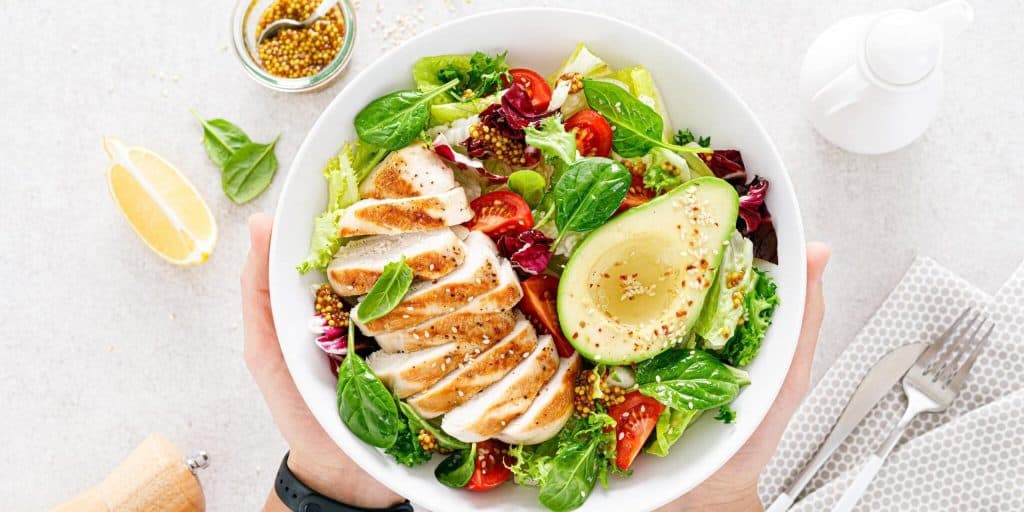
Did you know that 95% of Americans don’t get enough fiber each day?
The American Heart Association says that women should try to eat 25 g of fiber (or more) per day and men should strive for 38. It’s crazy that most Americans only get about 15 grams per day.
Why do we need all this fiber? Here are 6 good reasons.
- Gut health
- Keep a healthy weight
- Help keep bowels regular
- Balanced blood sugar
- Heart and cholesterol friendly
- Natural detox.
Check this list to see if you are getting regular fiber from any of these sources; and then add up what you get along with the fiber from the other foods you eat daily.
- Avacado 1/2 cup – 6.7 grams
- Broccoli 1/2 cup – 2.6 grams
- Brussel Sprouts 1/2 cup – 3.8 grams
- Apple w/skin 1 medium = 3.7 grams
- Banana 1 medium = 2.7 grams
- 10 Prunes (dried) = 6 grams
- Blueberries (raw) 1 cup = 4 grams
- Raspberris 1 cup = 8.4 grams
- Strawberries 1 cup = 3.4 grams
- Pears 1/2 cup – 6.7 grams
- Chia Seed 1/2 cup = 40 grams
- Flax Seeds 1/2 cup = 12 grams
- Raisins (seedless) 2/3 cup = 4 grams
- Potato, baked w/skin 1 medium = 5 grams
- Baked Beans 1 cup = 14 grams
- Navy Beans 1/2 cup = 7 grams
- Oats 1/2 cup = 7 grams

EAT THE RAINBOW
We have looked at different food groups and how choosing your food is important to your health.
The EAT THE RAINBOW CHALLENGE was a great experience and one of many we have done over the years with SHAKLEE, both the corporation and with different Shaklee groups.
We all must be our best personal good health advocate and look for things that we connect with to help us.
9 out of 10 Americans do not eat the amounts of nutrients that their bodies need for optimal health. Understanding that is significant because there seems to be so many more illnesses and diseases today than ever before, and people are taking more medications than ever before.
Something has to fuel your body for it to function, and that is your nutrition. We know that on some level, and yet it is so easy to make food choices that have virtually no nutrition. The food tastes great, but at what cost?
I’m not saying we have to eat perfect. I certainly don’t. And I love those foods that don’t do much for my health but I crave at times.
If we eat too much of the bad, what’s going to nourish our body?
I’m sure I fall into that 9 out of 10 category, which is why I have a health plan that bridges those gaps. Feeling strong and healthy and avoiding getting sick as much as I can is definitely a priority. Who has time to be sick right?!!
Living a healthy lifestyle doesn’t mean you have to eat perfect every day. But it is about making more better choices than bad choices. And it’s not only about being healthy for the future when you are older and illnesses hit harder. It’s about now so that 1) time doesn’t get away from you and then you have to play catch up when health challenges start, and just as important, 2) you can feel younger and strong and healthy and energized NOW to live your life the best possible way. It really does pay off to take care of yourself!
Life is busy and lots of times we put taking care of ourselves on the back burner because we are either taking care of others or just running constantly and there’s no time. It’s important to realize that taking care of yourself benefits both you and everyone else in your life AND it doesn’t have to be hard or take too much of your time.
It’s more about having a plan. Or how about participating in a CHALLENGE?
NOTE: Even if you don’t follow the Eat the Rainbow Challenge completely, you can still benefit from getting the healthy info that will be shared.
Tracking what you eat may be the single most important thing you can do for your body. It can bring you the most noticeable results such as: more energy and better focus, stronger immune system, lower blood pressure, reduced risk of heart disease and stroke, lower the risk of eye and digestive problems, balanced blood sugar, healthy weight management, stronger bones, better sleep and so much more.
Message us if you need help of any kind or have a question that hasn’t been addressed or want to discuss healthy eating.
We are not medical professionals. We are regular people just like you, and we’ve been on a healthy living journey for the past 43 years to live younger, energized and healthy longer.
*These statements have not been evaluated by the Food and Drug Administration. These products are not intended to diagnose, treat, cure, or prevent any disease.
